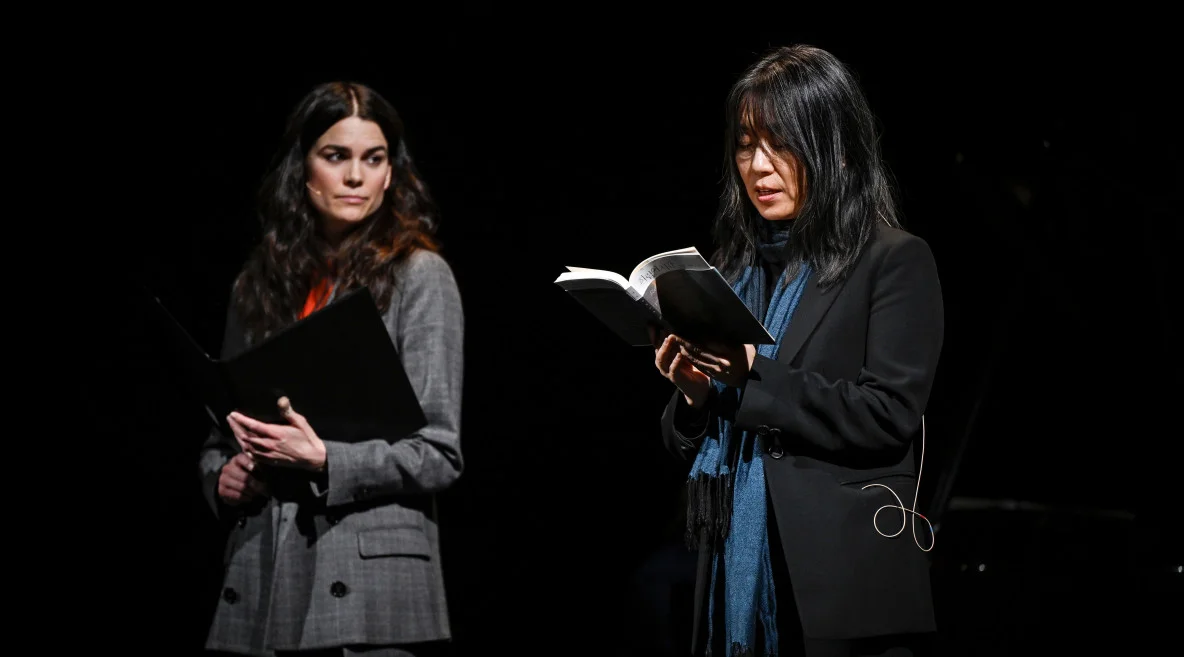
This year's Nobel laureate in literature, the South Korean author Han Kang (R), reads on stage at The Royal Dramatic theatre in Stockholm, Sweden December 12, 2024.Photo: Henrik Montgomery/ TT News Agency/Alamy Live News
The year 2024 proved to be one of seismic shifts, upheavals, wars, and catastrophes—events that, regrettably, did not spare even Kazakhstan, our own country. As we bid farewell to this turbulent chapter in time, the Qalam editorial team selected ten moments that, in our view, will not only carve their mark into the annals of history but may even, against the odds, push the world toward a better future (with the exception, of course, of time-zone adjustments).
- 1. Award of the Year: South Korean Novelist Han Kang Won the Nobel Prize for Literature
- 2. Flavor of the Year: The Discovery of the World's Oldest Loaf of Bread
- 3. Book of the Year: The First Encyclopedia of Kazakh Pop Music
- 4. Film of the Year: Bauyryna Salu
- 5. Graffiti of the Year: The Oldest Narrative Painting in History
- 6. Discovery of the Year: Whose Coin Is This?
- 7. Technology of the Year: AI Cracks the Code of Charred Papyrus
- 8. Dramatic Turnaround of the Year: Never Say Neverkusen Again
- 9. Danced to the Limit: Breakdancing at the Olympics
- 10. Eclipse of the Year: The Untranslatable Game of Time
Award of the Year: South Korean Novelist Han Kang Won the Nobel Prize for Literature
This historic achievement not only marks the first time the literary accolade has been awarded to someone from South Korea but also serves as a welcome reprieve from the usual criticisms of the Nobel Committee’s alleged political bias and predictable selections. In truth, recent laureates have leaned toward the mainstream and, dare we say, accessible figures (Annie Ernaux and Jon Fosse among others come to mind). Han Kang, with her powerful and unflinching novel The Vegetarian, exemplifies this trend—a literary sensation as daring as it is deserving.
Flavor of the Year: The Discovery of the World's Oldest Loaf of Bread
In March 2024, during excavations of the Neolithic settlement of Çatalhöyük in Turkey’s Konya province, archeologists unearthed a broken oven. Inside lay a remarkable find: an untouched loaf of bread estimated to be at least 6,600 years old.
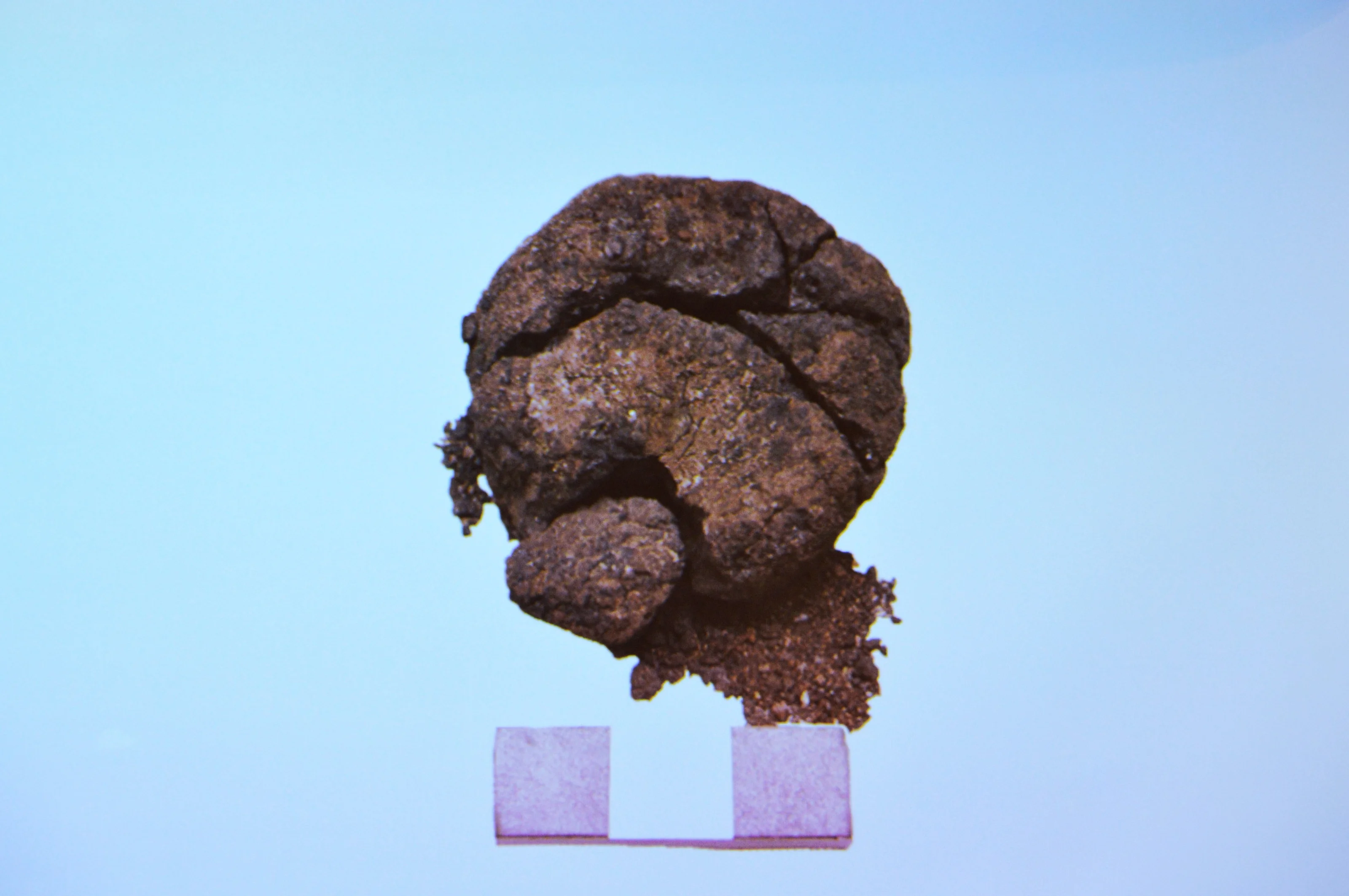
The 8,600-year-old bread found at Çatalhöyük in Türkiye/Necmettin Erbakan University
The world’s oldest loaf was modest in appearance—a simple mixture of flour and water, left to naturally ferment, shaped into a rounded form, and marked with the gentle press of a finger to give it a slightly flattened shape. Sadly, the bread never fully baked. Whether it was interrupted by an earthquake or the oversight of ancient builders, the oven collapsed before the loaf could finish cooking, leaving its starch granules perfectly preserved and unscathed by heat.
Historians have long known that the Neolithic Agricultural Revolution, which began in the tenth millennium BCE, brought advancements in grain cultivation and bread-making to the region. But this discovery offers us tangible proof. Along with the oven, the dig uncovered grains of kernels of wheat, barley, and peas, corroborating our understanding of the crops cultivated in this era and further enriching the story of humanity’s culinary past.
Book of the Year: The First Encyclopedia of Kazakh Pop Music
91–23: The Popular Music of Independent Kazakhstan is a dazzling work that straddles multiple identities: part coffee table book, part gripping narrative, and part academic deep dive. The work meticulously reconstructs the soundtrack of an era, capturing the essence of Kazakhstan’s pop culture since independence.
What makes this book truly remarkable is its foundation in oral history, woven from a tapestry of music recreated from the collective memories of countless eyewitnesses. It’s a living archive, shaped by voices that bring the rhythms and beats of the past to vivid life. We eagerly await a sequel—or rather, a prequel—delving into the history of Kazakh music from the Soviet era. For now, this ambitious volume stands as both a cultural milestone and an irresistible read.

Cover of the music encyclopaedia/press archive
Film of the Year: Bauyryna Salu
The year 2024 was notable for Kazakhstan for more things than somewhat unconventional Olympic uniforms or the nation’s historic first Olympic gold in judo. It was also a year of cultural reflection and the revival of deeply rooted Kazakh traditions—most notably, bauyryna salu. This custom, in which young parents entrust their firstborn to the care of elders (typically the grandparents), serves as the emotional core of Askhat Kuchinchirekov’s debut film, Bauyryna Salu. The tradition, with its complex web of familial dynamics—from alienation from one’s biological parents to generational conflicts and inheritance disputes—resonates powerfully in the story, mirroring the filmmaker’s own traumatic childhood experience.
The film garnered critical acclaim on the international circuit, traveling from the Shanghai International Film Festival to San Sebastián, picking up awards along the way. It was also selected as Kazakhstan’s submission for the Best International Feature Film category at the Oscars. While it ultimately didn’t make the shortlist, Kazakhstan still made its mark on the Academy Awards with Kneecap, a quirky project from Kazakh producers Dias Feld and Kamila Serkebayeva. The film, centering on an Irish-language hip-hop trio, secured Ireland a place on the coveted shortlist, proving that Kazakh talent can transcend borders in the most unexpected ways.
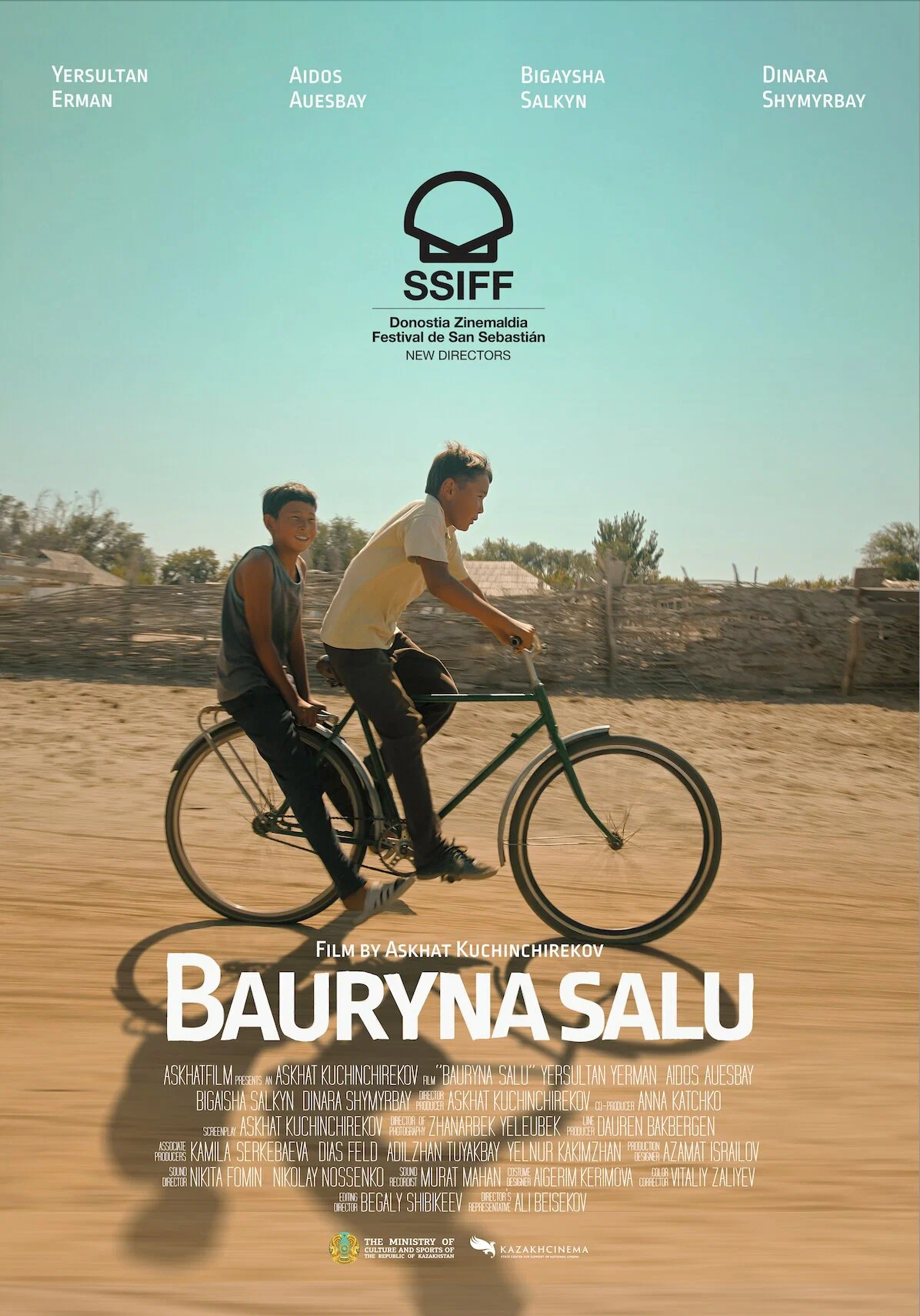
A poster for “Bauryna Salu”/from open sources
Graffiti of the Year: The Oldest Narrative Painting in History
On the Indonesian island of Sulawesi, archeologists unveiled a stunning discovery: a 51,000-year-old rock painting, now considered the earliest known example of narrative art. The image depicts a scene featuring a pig and three human figures and is a strikingly complex composition for its era, even if its meaning remains elusive.
While humans began crafting simple ochre patterns as far back as 100,000 years ago, the long held consensus between experts is that the first narrative drawings emerged in Europe, in the caves of Spain. Sulawesi, however, has shattered this notion—and not for the first time. Just a few years ago, the same island delivered another record-breaker: a 45,000-year-old depiction of a pig. With this latest discovery, Asia solidifies its claim as the cradle of humanity’s earliest artistic endeavors, rewriting the narrative of where, and how, the story of great artists truly began.

51 000 years old cave art from Indonesia/Griffith university
Discovery of the Year: Whose Coin Is This?
In June 2024, during fieldwork conducted by the International Comprehensive Historical and Archeological Expedition of the Tamgaly Museum-Reserve, a remarkable find emerged from the Kogaly and Almaly valleys: a pristine copper coin.
The coin features a ruler wearing a pointed Sogdian hat encircled by two inscriptions in the Sogdian language: bgy (god) and prn (grace). On the reverse, it bears a tamga, the personal emblem-seal of the ruler. This is the first discovery of such a coin in Kazakhstan, and its significance is profound. It offers a rare glimpse into the identity of the people who inhabited the ancient settlement in Jetisu between the seventh and eight centuries. For more information about the discovery, the full story can be found here.
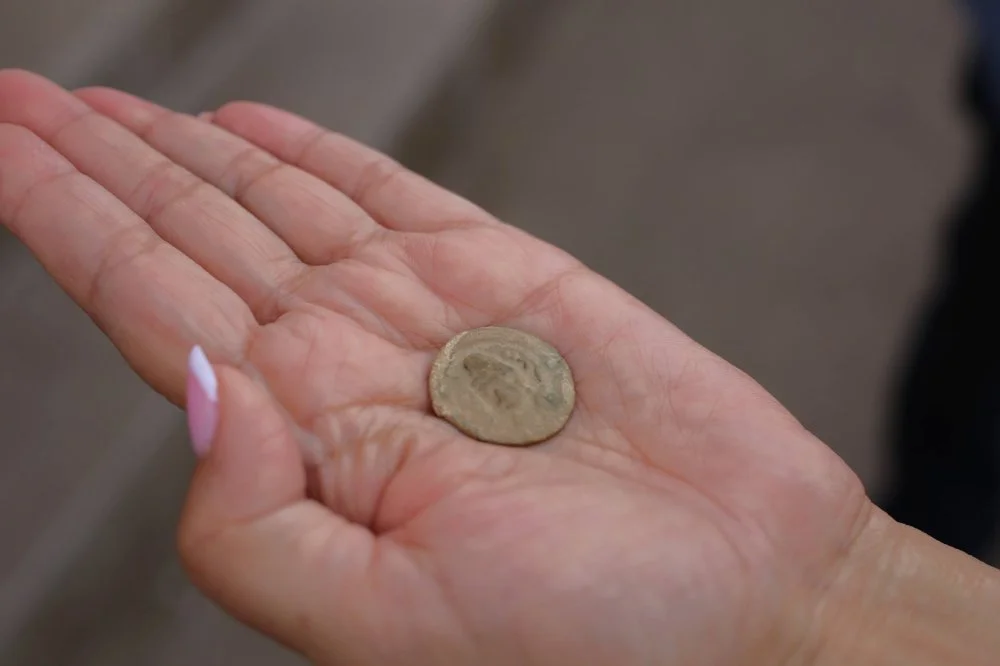
Coin/Alexey Rogozhinsky
Technology of the Year: AI Cracks the Code of Charred Papyrus
The Herculaneum Papyri, a treasure trove of ancient manuscripts buried under the eruption of Mount Vesuvius in 79 CE, have long posed a seemingly insurmountable challenge to scholars. While some scrolls survived intact beneath layers of compacted ash, nearly 1,800 were irreparably damaged by intense heat, reduced to carbonized, rock-like lumps, and deciphering their secrets seemed impossible.
In the early 2000s, advancements in non-invasive imaging techniques, including X-ray micro-computed tomography (micro-CT) and the UK’s Diamond Light Source synchrotron, allowed researchers to digitally ‘unwrap’ the scrolls without causing physical damage. These reconstructions were made publicly available, but the texts themselves remained frustratingly undecipherable.
Finally, in 2023, tech entrepreneurs Nat Friedman and Daniel Gross launched the Vesuvius Challenge, offering a USD 700,000 prize to anyone who could decipher the texts. By 2024, the breakthrough was made. A team consisting of college student and SpaceX intern Luke Farritor, Egyptian roboticist Youssef Nader, and Swiss programming student Julian Schilliger created an AI algorithm capable of recognizing approximately 2,000 letters from two unrolled scrolls.
The first deciphered word? Πορφύρας, Greek for ‘purple’. This stunning leap in technology not only resurrected voices silenced for nearly two millennia but also paved the way for untangling countless other mysteries locked in ancient, damaged texts.
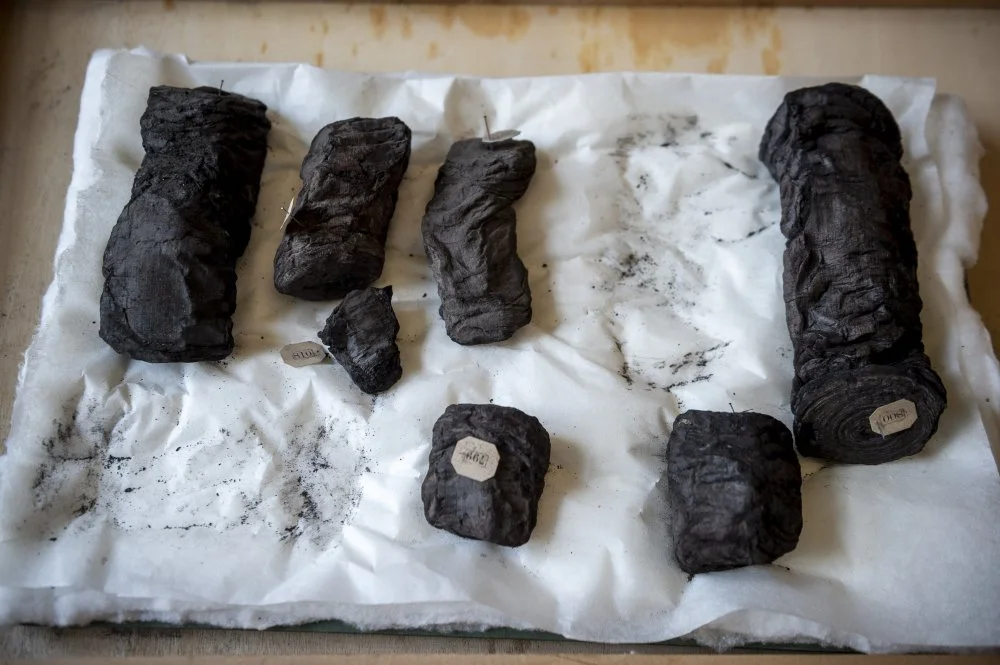
Papyri Herculaneum /Getty Images
Dramatic Turnaround of the Year: Never Say Neverkusen Again
What do aspirin and heroin, the ubiquitous pain reliever and the infamous opioid, have in common? Beyond their shared roots in early twentieth-century medical breakthroughs, they’re linked by over a century of agonizing frustration that resurfaces every spring, leaves a gaping wound by summer, and slowly begins to heal—only to return the following year. Or at least, that was the case until this year.
In the spring of 2024, a miracle occurred: the unluckiest football club in history, Bayer Leverkusen, not only clinched the title of the Bundesliga, the professional football league in Germany at the top of the German football league system, but also achieved the longest unbeaten streak among Europe’s top five leagues.

Bundesliga, BayArena Leverkusen; Bayer Leverkusen - FC Augsburg; Xabi Alonso (LEV) celebrates with the champions trophy/Alamy
Founded in 1904 by employees of the Bayer pharmaceutical company—the creator of both aspirin and heroin trademarks—the Bayer Leverkusen club spent decades languishing in mediocrity. Known as Vizekusen (‘Vice-kusen’) for their painful habit of finishing second (five times in the Bundesliga alone), the team also earned the global moniker ‘Neverkusen’ for their chronic inability to win major titles, including a heartbreaking loss in the Champions League final.
But 2024 was the year they rewrote history. The ‘Pharmacists’ stormed to the German championship undefeated—a feat that eluded even the mighty Bayern Munich. With their triumph, Bayer Leverkusen retired their old nicknames and embraced new ones: Neverlusen (a play on the words ‘never losing’) and the defiant, triumphant ‘Never Say Neverkusen Again’.
Danced to the Limit: Breakdancing at the Olympics
Breakdancing made its Olympic debut in Paris in 2024, joining a lineup of unconventional sports like surfing, skateboarding, and sport climbing as part of the International Olympic Committee’s (IOC) ongoing effort to attract younger audiences. Yet, this first outing will likely be remembered less for its champions and more for the polarizing performance of Australia’s Rachel Gunn, who finished last.
Gunn’s routine diverged dramatically from traditional breakdancing, prompting the cautious description of her approach as ‘overly creative’. Her performance sparked a wave of memes and criticism from fans and athletes alike, casting her as a controversial figure in the sport’s Olympic debut. Gunn, who happens to be a professor of cultural studies, shrugged off the backlash, asserting that ‘everyone has their own style’.
Unfortunately, breakdancing won’t have a chance to redeem itself at the next Summer Games. The discipline was excluded from the Los Angeles 2028 program—not as a reaction to Gunn’s performance but due to a decision the IOC made before Paris. The brief Olympic tenure of breakdancing left an impression, albeit not the one many had hoped for. Whether the sport will spin back into the Olympic spotlight remains an open question, but for now, its legacy in Paris will be as unconventional as the moves it showcased.
Eclipse of the Year: The Untranslatable Game of Time
In the early hours of 1 March 2024, Kazakhstan made a sweeping adjustment to its clocks, aligning the entire country with the UTC+5 time zone. What began as a lighthearted subject for jokes and memes quickly turned into a source of widespread frustration. Social media and news outlets buzzed with complaints, as citizens reported adverse effects like deteriorating health, social jet lag, disrupted schedules, and costs associated with system reconfigurations.
By June, a petition demanding a return to the previous time system had garnered enough signatures to warrant official review. However, the Ministry of Trade and Integration rejected the request, citing ‘substantiated international scientific research on the benefits of standard time’ and a lack of verified evidence linking the change to negative health outcomes.
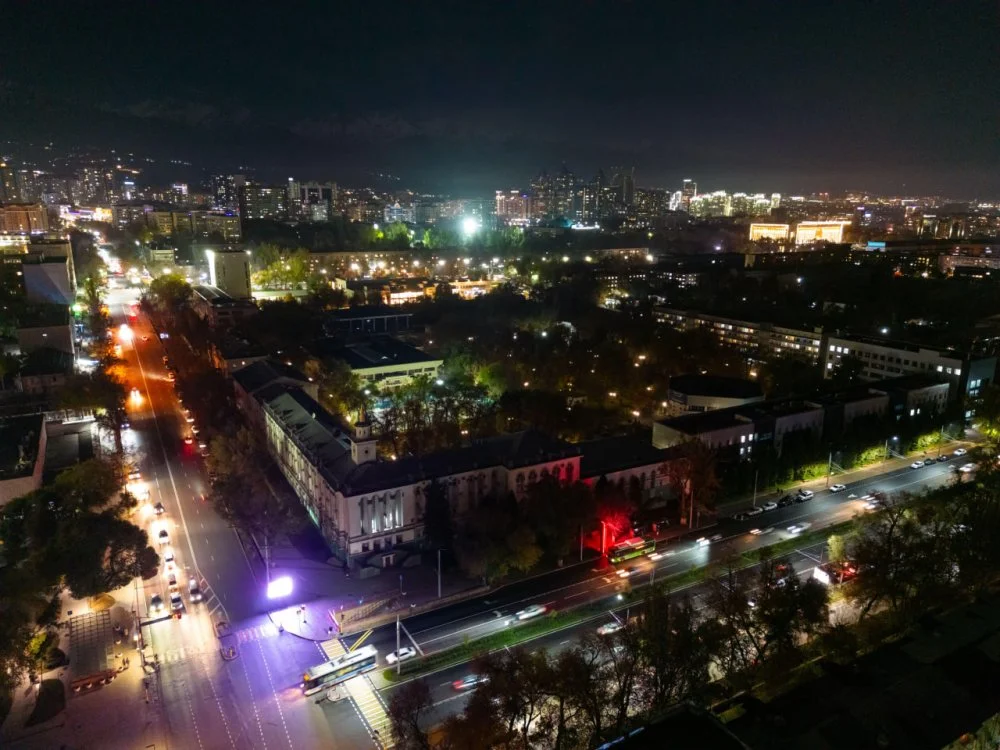
Aerial view of Almaty city streets at night /Alamy
The time shift remained a hot topic throughout the year, generating one headline after another. A citizen filed a lawsuit challenging the ministry's decision, though it was dismissed. Members of Parliament expressed outrage, insisting the people's opinion be respected. Meanwhile, a monitoring group was established to track public grievances and health trends. Most recently, news broke that the budget for a comprehensive study on the time change’s impact had been slashed from 100 million to 54 million tenge.
Until March 2024, Kazakhstan had operated across two time zones: UTC+5 and UTC+6. Prior to that, in 2005, the nation abolished the practice of switching between daylight saving and standard time. The global trend away from daylight saving time continues, as explored in our detailed report.